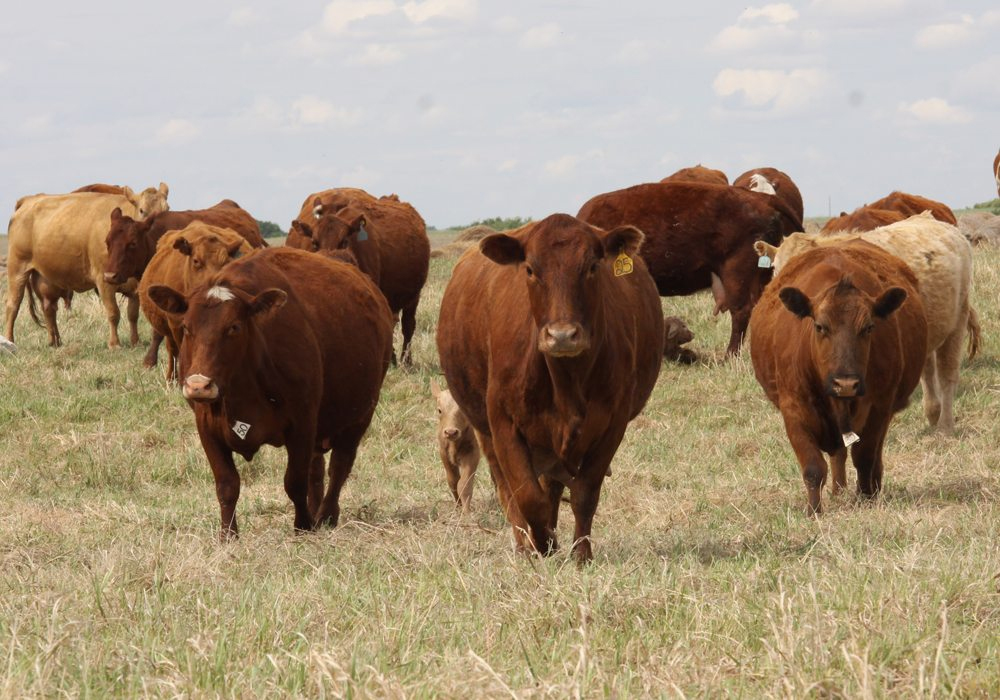Producers say they don’t want government intervention, instead preferring help to make smaller packers more viable
A beef industry competitiveness study commissioned to find ways to put more money in the pockets of Alberta’s cattle producers will likely be unveiled in November.
“It got kind of off to a slow start, but we’re hoping to have some indication of where we can improve producer profitability,” said Melanie Wowk, chair of Alberta Beef Producers.
Prices in the next few months will likely determine whether some producers, particularly older people, will continue raising cattle in an industry that is aging, she said. “The producers I have spoken to, some of them have said if prices don’t improve dramatically that it could be time for them to liquidate.”
Read Also

Canadian Food Inspection Agency extends chronic wasting disease control program consultation deadline
Date extended for consultation period of changes to CWD program
Wowk said the timeline for the provincial government study was outlined by Agriculture, Forestry, and Rural Economic Development Minister Nate Horner at the first-ever Alberta Beef Industry Stampede Summit. The event was hosted July 14 during the Calgary Stampede by ABP, along with the Alberta Cattle Feeders’ Association, Canadian Cattle Association, and Western Stock Growers’ Association.
About 170 people attended the summit, which was an informal reception held at a Calgary restaurant to enable beef industry leaders to meet one-on-one with politicians, said Wowk. Alberta Premier Jason Kenney was unable to attend, but it included Horner and federal Agriculture Minister Marie-Claude Bibeau.
The study, which was launched in 2021, involved most of the beef associations hosting the summit. Wowk said last year that soaring beef prices endured by consumers don’t reflect what producers earn for their cattle at a time when costs for inputs such as feed and fuel are going through the roof.
Two large packers in southern Alberta are responsible for 80 percent of the slaughter of Canada’s beef market, she said.
“And, so, the question is exactly why is there such a discrepancy between what we’re getting, and what the packers and retailers are making?”
The COVID-19 pandemic highlighted the challenges facing a supply chain relied on by consumers as well as producers. The study seeks to “understand the apparent lack of packing capacity to build resiliency through the beef supply chain,” said an ABP statement.
“Research in this area will help industry and government understand the best approach to diversify and build capacity and resiliency for Alberta’s meat processing sector. It will also address concerns around price discovery and transparency by identifying which data should be reported at each stage of production, and highlighting potential interventions when margins become excessive.”
However, Wowk emphasized in an interview July 15 that producers have said they don’t want government intervention into free market trade “because that just never seemed to turn out very well.” They are instead considering measures such as getting the Alberta government to help establish more medium-sized packing facilities that are provincially regulated, along with ensuring such operations are more viable by allowing them to provide meat to other provinces besides Alberta.
Wowk said the proposal faces an uphill battle because interprovincial trade in meat is currently only allowed using products from federally inspected plants, with any change requiring Ottawa’s approval. It would also open Alberta to competition from provincially inspected meat from other provinces, she said.
There are three key components to the study, said the ABP statement.
“First, it will provide a better understanding of the barriers to entry and expansion for the packing sector.
“Second, it will address confidentiality concerns through price transparency in Canadian boxed beef prices. And finally, it will provide a literature review of the price discovery conversations around fed cattle in North America, including an evaluation of U.S. proposals in the Canadian context.”
















